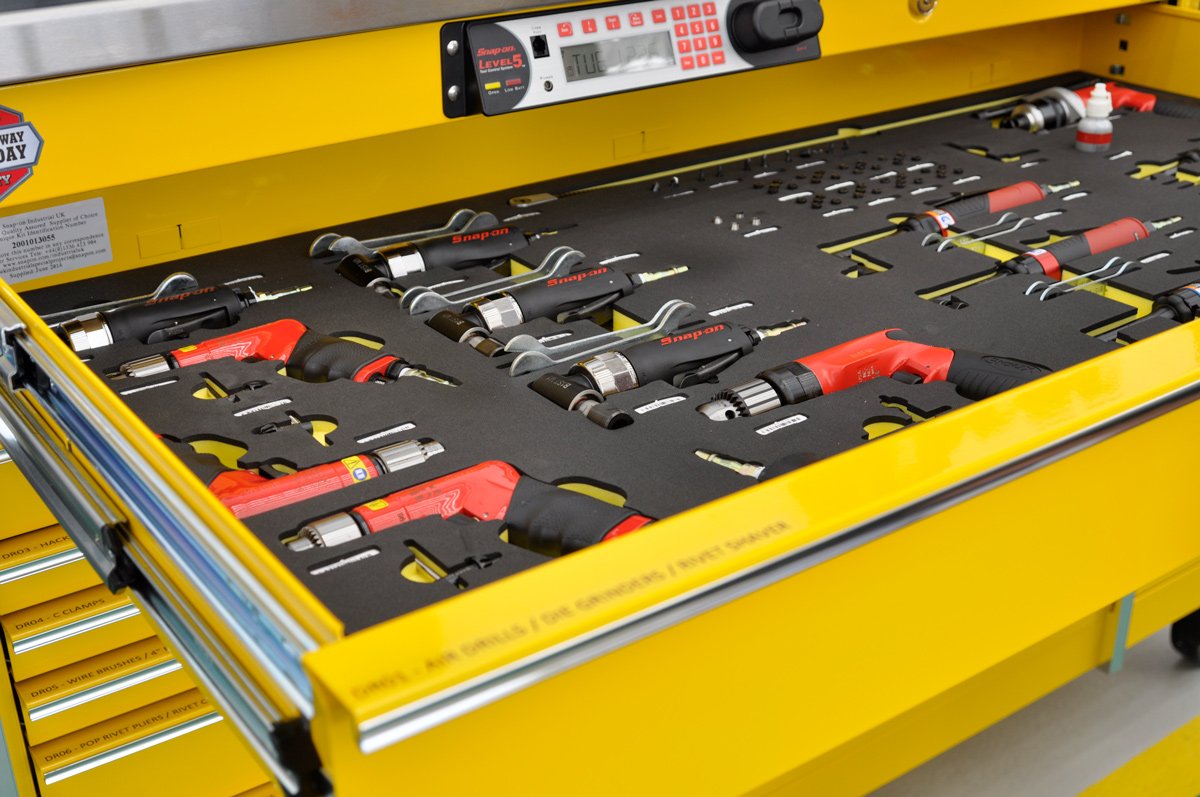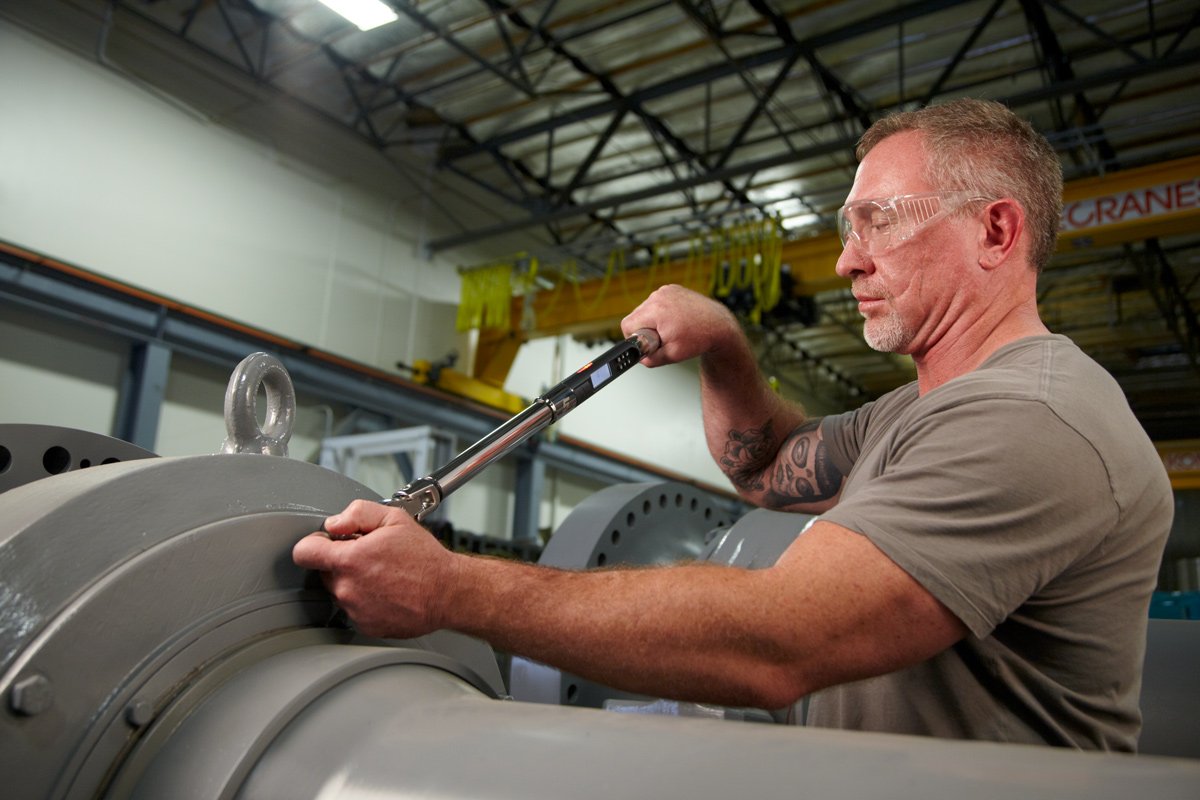News Article
Placing IQ into Tool Boxes and Cribs
Talking tool boxes can alert you when a tool hasn’t been properly returned.
It’s among the developments in tool boxes and cribs as part of efforts to reduce foreign object damage concerns, says Snap-on industrial’s Scott Steward.
“Technology today is making tool control a more effective concept to obtain. Innovations are taking tool control to the new level by working to improve technician performance and productivity” – Scott Steward is the aerospace and aviation asset solutions manager for Snap-on Industrial.
Tool control has always had added importance in the aviation industry. While a missing tool in an automotive bay can lead to inefficiencies, plus the cost for the tool replacement, a tool that gets left behind on an aircraft or dropped on a ramp can lead to much more devastating consequences.
Despite the high stakes, the onus has generally been placed upon the individual organisations to ensure accountability for their tools. Of course, some accomplish that better than others.


An effective tool control programme has many benefits – not least saving time and improving safety.
Some MROs require technicians to bring their own boxes to the hanger, creating an environment where it’s nearly impossible to implement any sort of comprehensive uniform tool control guides. However, there is hope. Technology today is making tool control a more effective concept to obtain.
Innovations are taking tool control to the next level by working to improve technician performance and productivity – saving MROs money – all while greatly reducing foreign object damage (FOD) concerns.
These advances are driving the industry to develop safer maintenance practices, and in turn allow MROs to become proactive in meeting safety standards the aviation industry demands.
The case for tool control
Creating a tool control programme means eliminating the hodge-podge of technician-owned boxes and deploying company-supplied tools for consistency in the hanger.
There needs to be a uniform benchmark for tools, as well as a method to accurately track and monitor them. A lack of standardisation and control over the number and type of tools can result in accidental oversight and unnecessary risk – such as what happened several years ago when a Boeing 737 lost an engine in flight.
After the aircraft made an emergency landing, investigators examined the engine and were surprised to learn the culprit was a tool mistakenly left behind. The investigation revealed that while performing maintenance on the engine, an engineer and technician left a tool behind the engine cavity.
The technician tightened bolts after servicing the engine, but failed to notice a small gap that was created when the covering didn’t sit properly on the engine. That gap was caused by an expander tool overlooked in the engine. Fortunately, the aircraft landed safely and everyone walked away, but the incident clearly illustrates the danger lost or forgotten tools can pose to the aviation industry.
“Investigators were surprised to learn the engine was lost in flight because of a tool mistakenly left behind”

With a quick scan, tools and equipment checked out from a tool crib can be tracked, enabling administrators to know which technician has possession of that particular item.
Automation in the boxes
Digital imaging technology is one way to bring standardisation and accountability to tool boxes. This technology provides the ability to monitor and track tools as they are removed and returned form the boxes throughout the day – all in real time. It works by scanning each tool in the draw to determine its status. If tool status is questionable, an interactive monitor affixed to the box can display the disputed tool transaction, or it can be identified in the audit image at the administrator’s PC. User log and data time/date information id available for every transaction.
Digital imaging technology offers several advantages to the aviation industry. For starters, it reduces FOD concerns. If a technician checks out 15 tools and later returns 14 tools, the system announces that a tool is missing, but which one, and the task being worked on, alerting the technician to go back. Additionally, the digital imaging software allowed the box’s designated administrator to add or delete users, assign various levels of user access and lock permissions, and track individual tool usage.
The system can be synchronised to individual or multiple boxes and can pull data and images from each selected tool box. It also allows people and supervisors who are connected to the box throughout the network to know the status of all controlled tools and equipment.
It operates like an unmanned tool crib at the point of work, improving technician productivity.
Linking tool boxes to tool cribs
The level of accountability is now extending to the tool crib as well.
This is valuable because in the past organisations didn’t have an efficient way to move tools and equipment within their inventory, or accurately keep track of them. While tool boxes were being monitored with a system like digital imaging, there wasn’t an effective complimentary programme for the tool crib. More importantly, there wasn’t an efficient network linking the tool crib to tool boxes and lockers. Innovations are making this happen today, and the benefits are plentiful.
With a quick scan, tools and equipment checked out from a tool crib can be tracked, enabling administrators to know which technician has possession of that particular item.
Other capabilities include setting up calibration schedules for tools such as torque wrenches to ensure compliance dates aren’t missed, and administrators can be alerted when consumable items such as drill bits, fastenings, PPE and other products are running low and need reordering. This enables airlines and MROs to connect the tool cribs with the boxes and lockers – linking all critical components of tool control under one central platform.
Deploying a well-designed tool control system will work toward consolidating tools in your facility. It’s also going to reduce FOD concerns and improve accountability, while promoting an atmosphere for crib attendants and technicians to be more productive. Tool control is fast becoming an area that works for you – and that’s all thanks to automation and connectivity.
